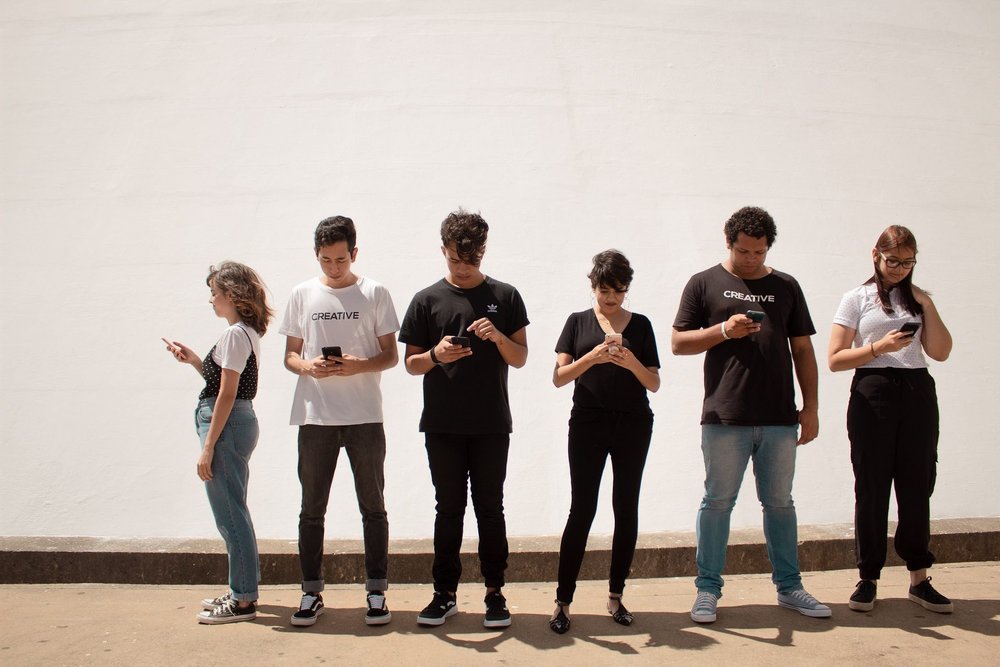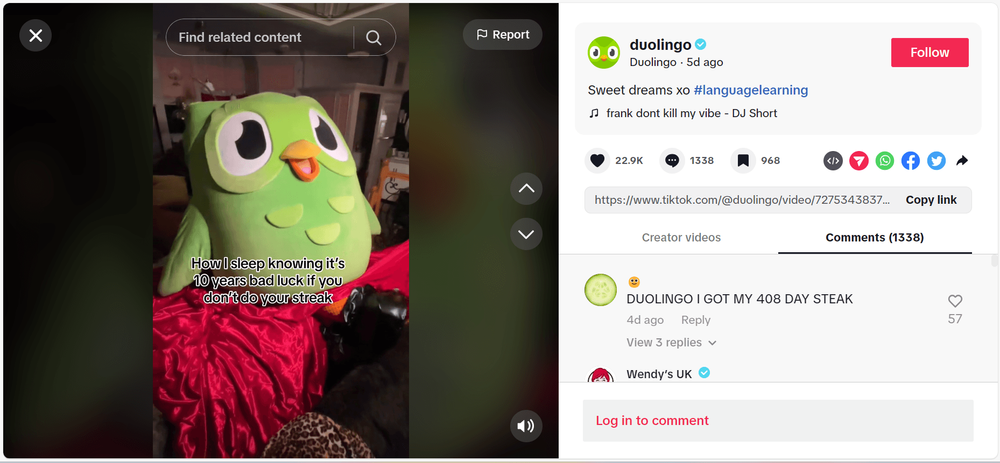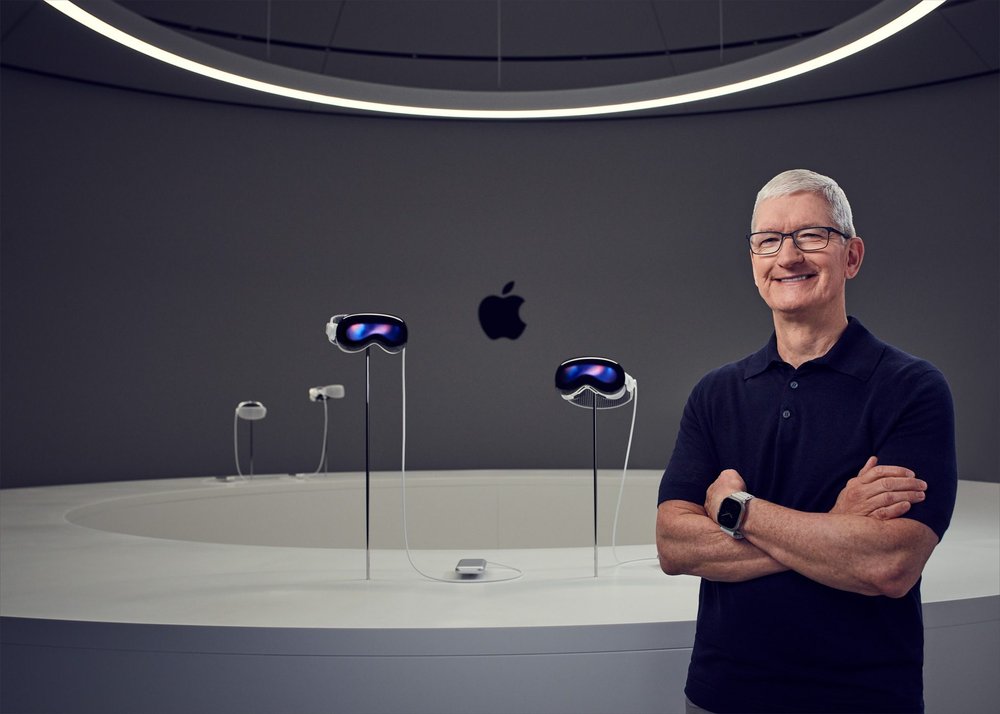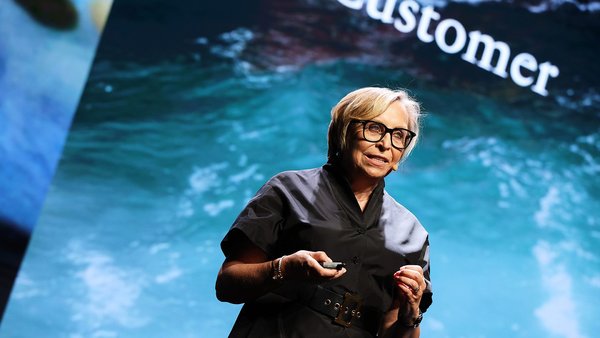Matt Navarra on social media: ‘people aren’t sharing as much’ /
Social media consultant and analyst Matt Navarra on the shift to private sharing on social media, live commerce and why the metaverse remains a question mark
James Swift
/
Photo by Creative Christians on Unsplash
If you like to keep up with tech journalism, you will have probably come across articles in the past few months arguing that social media has become less social.
There is as far as we’re aware no hard data to demonstrate that casual social media users are posting less, and ceding the territory to creators and brands, but it is telling that so far no one seems to be trying to argue the point.
Some say the platforms themselves are responsible for the shift because, in a bid to emulate TikTok’s success, they’re focusing on developing infinite scrolls of short-form videos at the expense of providing users with the apparatus to keep up with friends or family.
Others just think that, after two decades of social media, people have become fatigued with and wary of posting the minutia of their lives online for all to see.To learn more about what is happening on social media, and how it is affecting brand behaviour, we asked Matt Navarra.
Navarra is a social media consultant with a reassuringly large following on Twitter (171.1k) who writes a popular newsletter for social media managers called Geekout. If you count making Twitter and Facebook accounts for the Intellectual Property Office against the wishes of his bosses, Navarra has been working in social media since 2009. And since leaving his post at tech publisher The Next Web to go freelance in 2018, he has helped large tech companies, government agencies and international organisations develop their social strategy.
Navarra spoke to us about the rise of private sharing, whether brands should still bother to post organically on social media, and whether platforms in the West will ever crack live commerce.
Is social media becoming less social?
I think we've seen a significant shift in social in various ways in the last few years, but particularly in respect of private social. Adam Mosseri [the head of Instagram] was on a podcast last month talking about the fact that the biggest growth areas on the platform are not to do with the feed. When people say, ‘I don't see my friends and family posting in my feed anymore,’ it’s not because the algorithms changed, it’s because people are not sharing as much.
Platforms like Instagram have seen major shifts. People’s interests and motivations and awareness of how social works has changed so much that private sharing has become a huge growth area. And there’s lots of reasons why that would be. I’m sure if research was done, you would see that people are more conscious of the risks of public sharing, of people attacking them for their views and opinions, or using that information against them in some way.

Photo by Barefoot Communications on Unsplash
I think there’s also the fact that people have got less time to dedicate to individual platforms, and they want to make the time they spend on social meaningful by connecting with the people that are most important to [them] in a space that feels safe, or alongside like-minded people; that might be friends and family, or it might just be people that have shared political ideologies or come from the same walk of life.
I also think the sorts of features that are most useful and most valuable to people nowadays tend to be things where you can quickly share things to small groups of people, and the platforms have leaned into that. Whether it’s sharing a link to an interesting story or a product that’s really cool, the motivation for sharing it publicly is not as great anymore, unless you’re a professional user or a creator or advertiser. Most people don’t care too much about trying to go viral, it’s more about connecting with the people you care about most.
All of that together [means] people are sharing less publicly and are engaging less in public spaces. The use of social is still increasing. People are spending more time on social platforms and using a greater number of platforms than they did before, which spreads that time more thinly, but the public sharing to feed is dropping significantly, and that’s why most of the new features being developed by these platforms tend to revolve around private sharing.
Is this shift towards private sharing beneficial for the social media platforms, in terms of how they make money?
I think that they’ve certainly had to shift their business models in recent years to keep up with the pace of change, in terms of how people are using social and what makes money for them.
Advertising will for the foreseeable [future] be the predominant income stream for them, but you’ve now started to see this trend towards subscriptions. We’ve seen Snapchat Plus and Twitter Premium, and Meta Verified as well. This is in part in response to the shift in how people use social, but also as a way [for the platforms] to wean themselves off of their reliance on advertising revenues.
There are also all sorts of regulatory shifts happening in the world, particularly in Europe, with the Digital Markets and Digital Services Acts, and other moves by competitors, like Apple in terms of their impact on app tracking, which knocked $10bn off the ad revenue and income from Meta.
So there’s probably a desire by them to change some aspects of how they operate to mitigate these issues – but also to figure out ways they’re going to make money going forwards because of some of the bigger shifts happening in the long term. We’ve got the metaverse, and AR and VR activity, we’ve also got generative AI, and all of those require significant investment and could change the ecosystem of social. Who’s to say in 10 to 15 years that we’re all going to be using smartphones? And if it’s on a different device, how does that affect the display of ads and the viewing of advertising?
Matt Navarra
In the near term there’s additional costs that they’re now having to pick up as well because you’ve got this battle for creators, which are the lifeblood of these platforms, with multibillion-dollar creator funds or ad revenue shares. It’s taken all this time for platforms like Meta to consider an ad-revenue share.
And they not only have to stay ahead of the curve, they also have to imitate what successful things other platforms have done. It’s no surprise that we don’t see many successful new social networks come up because the cost of getting one to work and to generate a profit against the competitors that exist in the marketplace now is extremely hard. ByteDance has been one of the few that’s been able to outspend other people and breakthrough but others have struggled.
Has this shift affected how brands show up on social media feeds?
Some marketers and advertisers and social media managers have benefited from the fact that there’s been this huge growth in short-form video content. It’s a vertical video format, which to be honest, if you create video for TikTok, can be repurposed fairly easily for other platforms. It’s not about having to create multiple different versions that are different sizes anymore; it’s more about adjusting the content in terms of style, tone and topic based on the audience profile of the platform that you’re posting to.
I think that there is a difference now to say three, four, five years ago in terms of how brands use social, which has been evidenced by this significant growth in a couple of things: creators, and also more broadly, influencers and influencer marketing, and also on top of that, user-generated content. These are the mechanisms, the tactics, that can be used by brands and advertisers to reach their audiences, and for them to deliver their message in a way that is engaging and in keeping with the content on the platform. And so brands now have to think and act like they’re creators themselves, when they’re creating content for the likes of TikTok, Reels [Instagram’s TikTok clone], or YouTube or any other platform. And they significantly benefit from using a creator or an influencer, either as an individual to deliver the message or working with them to create content that’s going to resonate with their audiences.
Things have moved away now from social graphs on platforms like Facebook and Instagram, where it was all about being verified and having a huge following and creating posts that drove lots of Likes and Shares. Some of that stuff is still important to a limit, but now it’s far more about being part of these clusters and communities, and feeling like you’re native in terms of your presence. And it means that you’ve got to work a lot harder to be seen as authentic among the target audience. For some brands, that’s a lot trickier. Especially if you’re a smaller brand, TikTok can be quite an intimidating place, which is why creators and influencers provide that bridge to those audiences.

You mentioned the increase in private sharing. Do you get the sense that the social media platforms are going to find a way to incorporate more advertising into those channels?
It’s a trickier one, as you can imagine, to monetise because it’s a much more sacred place, and I think definitely there’d be resistance.
But there are things that they’re doing to monetise those spaces. If you open up Messenger, there’s ads in that inbox space already. And [Meta’s] monetising their business messaging product on WhatsApp, so there’s money to be made there. And they’re making money through subscriptions, and through other ways of allowing creators to create these communities and private spaces.
So directly and indirectly they’re still trying to monetise those spaces, but there are limitations around how much I think you can do before there will be resistance. I can't imagine a scenario where, if I was to create a group chat with my friends and family, whether it’s five people or 100 people, they would start injecting ads into that. But it’s not unreasonable to expect that they might put ads in your inbox where all your messages are waiting, which is what they are doing.
And they’re creating products that lean into people’s habits of private sharing, by creating click-to-message ads and other ad formats that get people engaging with brands in a messaging space.
Top of mind should be, ‘How do I make a piece of content that people will want to share in private spaces?’ Rather than post about this amazing top they’ve seen on H&M, which people might have done five years ago, they’re more likely now to kind of copy and paste that link and share it in a group chat with their mates. What do we need to do as a brand to make that easier, and make sure when it lands in those private shared spaces, that it looks as good as it can.
Do you think there is still value in brands posting organically on social media?
There is still a great deal of value in posting organically, and the small and medium-sized companies don’t have the luxury of being able to say, ‘We’ll just post paid content and nothing else.’
Matt Navarra
Also, you can’t just have paid content and then suddenly disappear from everybody’s feeds when you haven’t got the budget for paid. You need other things going on. So you still have to have an organic social content strategy. And also we’ve seen many examples of the surprising viral success of organic posts, and those opportunities arise by taking bets and pushing organic content. And also organic content is a way of learning about your audience, and for your audience to connect with you and to build that relationship with you. Because nowadays it’s about building communities more than it ever was.
So is the growing importance of community building linked to the shift towards private sharing on social media?
Partly, yes. Also, the platforms that have been highly successful in the last few years have had huge niche clusters… so it’s also a manifestation of the way the platforms themselves have evolved and the sorts of content that people want to view.
Does the recommendation algorithm pioneered by TikTok and adopted by other platforms play a part in the increasing importance of communities, by shepherding users towards certain kinds of content?
These algorithms now are so much more sophisticated, and [they’re] helping people find the content that they were always interested in but didn’t know existed. And so it’s easier for these platforms to sort of nurture these communities and for people to find them and then to spend time either creating or engaging with content related to it.

Which brands do you think understand the social media ecosystem at the moment?
One that’s often lifted up as a good example of really getting what’s going on in the landscape of social is Duolingo, particularly on TikTok. I think a more contentious one would be Ryanair. Now, Ryanair is definitely a very Marmite brand in terms of the way it uses social, but what I think it’s particularly good at is understanding what’s going on in the world, what people are talking about, what is entertaining people most, and also knowing their own audience really well.
Do you think that the social media platforms in the West will ever crack live commerce?
I think they will. It’s just a question of to what scale and when. I wouldn’t give TikTok a massive head start over the others in terms of being the most likely, but at the moment they seem the most hungry for it.
With all these companies, particularly ByteDance [which owns TikTok], there's this huge model of success in their home market in Asia that they see that there could be an opportunity to replicate. But the way that people use social in Asia is significantly different to the Western world. So it’s a challenge, and they’ve thrown a lot at it and it hasn’t really worked. QVC-style live shopping on social hasn’t really done much at all, and it shocked them because it’s so phenomenally successful in Asia.
I think that there’s some elements that they still haven’t figured out, but they’re slowly chipping away at it and incrementally getting better at product discovery and people being able to find in an organic way products that are of interest to them. They’ve added things in the last few years, like tagging posts on TikTok and increasing the caption length and adding different formats for posts and adding a Shop feed. So they’re constantly trying ways to make discovery easier and better.
The other thing they haven’t really figured out, which is surprising, is the payment side of things. I think people want to be able to scroll through the feed and go, ‘that top looks amazing, I want that top,’ and then be able to share and talk about it with their friends, and then tap on it and find out how much it is and then be able to buy the product inside the app without having to enter any more of their details. But that hasn’t happened.
There’s lots of reasons that could be – resistance from retailers, the payment system set up. And also people are more resistant to handing over medical and financial and private information about them in some countries. And then finally I think that people’s experiences of social shopping and commerce up until now hasn’t really encouraged them to try it again. And you don’t get many bites of the cherry, I would imagine.
And I think from the side of sellers and retailers, they’ve got to think about how, if they allow their products and services to be bought and sold in these platforms, what insights and data they’re going to lose from the traffic that’s not going to come to their own apps. So they’re ceding some control, and there’s inherently costs on their end.
What we’re seeing now is TikTok trying to make that much easier for small-to-medium-sized businesses. They’re trying to almost become the Amazon of the social world by creating the logistics setup and doing it all for you. You can pay a fee now to TikTok as a shop creator; they’ll take the order for you, they’ll take the payments for you, they’ll get the order in a warehouse to fulfil it, they’ll wrap it, they’ll send it and if someone wants to send it back they’ll take it back for you. All you need to do is give them the product and set up the shop and the pricing and manage the customer service.
So, TikTok’s almost acting like a dropshipper?
To some extent, yeah. The question is, is TikTok going to figure out how to be Amazon before Amazon figures out how to be TikTok? I think it’s more likely that TikTok is going to figure out how to become more like Amazon. It’s a significant financial investment to have that logistical retail setup you know, but I think it’s more likely that they can find a way to make that work on their end then it would be for Amazon to figure out how to become a social network.
Amazon has tried to launch its own TikTok-style video feed, hasn’t it?
They’ve done a couple of things over the years. They’ve had vertical-video feeds, some influencer-video feeds, and they’ve got huge levels of activity where they try to engage with influencers.

TikTok and Amazon have an interesting relationship because a lot of the activity on TikTok is leading people to Amazon to complete their order. It benefits mostly Amazon and so TikTok seems to be starting to realise that they need to be less dependent on that.
You mentioned the metaverse at the beginning of the interview. Do you get a sense of what the most transformative technology for social media will be?
It depends on what timeframe you’re looking at. At the moment generative AI is having a significant impact on the product development of the platforms in terms of features, Snapchat’s got loads of them built into its products, Meta’s ad product had a good boost in performance through the use of AI. And many of the platforms are testing AI chatbots and other features that help professional users but also everyday users of the platform.
I think the metaverse is such a big question mark, but it’s not one that we’re going to know the answer to for another five years or more. Apple’s vision product comes out next year and you’ve got all sorts of Meta Quest VR products coming out, and Snap’s doing its stuff and even Google’s working on its own bits and pieces. These will show us the capability of the technology, but we’ve been seeing the capability over the last 20 years of VR and AR, and it hasn’t actually taken off. When will we see a tipping point where we'll be able to go, ‘this is becoming mainstream?’ It doesn't feel like it’s going to be in the short term.

Games consoles like Xbox make a lot of money but it’s only a fraction of the people in the world who actually own one. But everyone does have a mobile phone. So is the metaverse going to be more like a games console, where a hardcore group of people have these devices, or is it going to be a device that nearly everyone has and becomes a necessity to live in this world? I think the latter is less likely to happen anytime soon.
Want more of the same? /
We don’t just write about best-in-class campaigns, interviews and trends. Our Members also receive access to briefings, online training, webinars, live events and much more.







